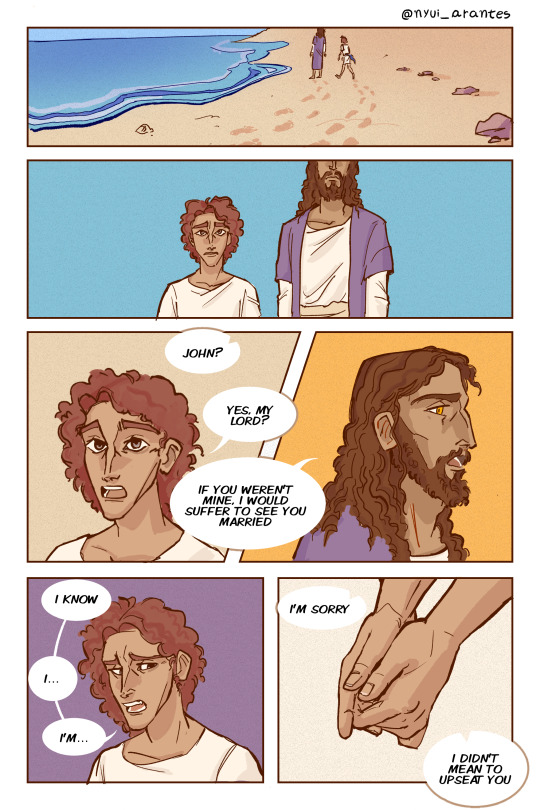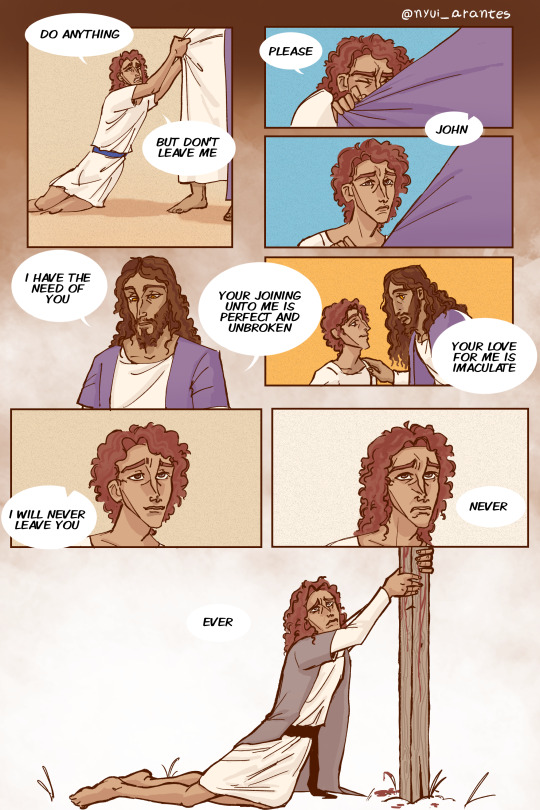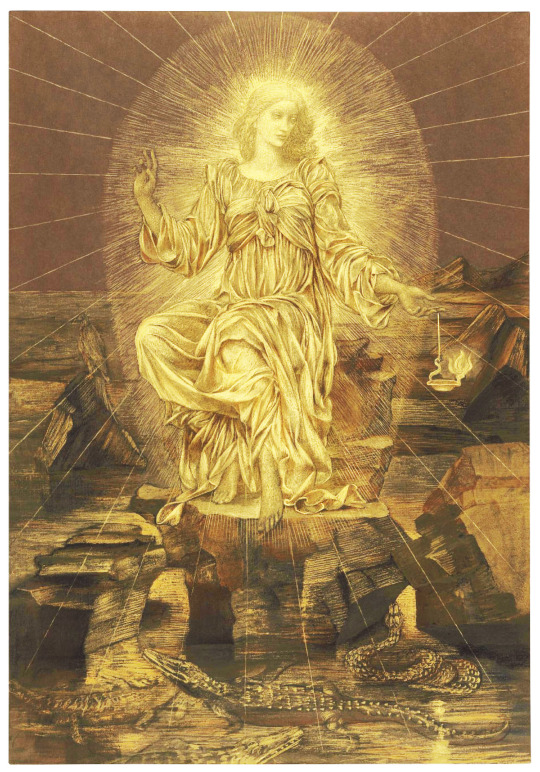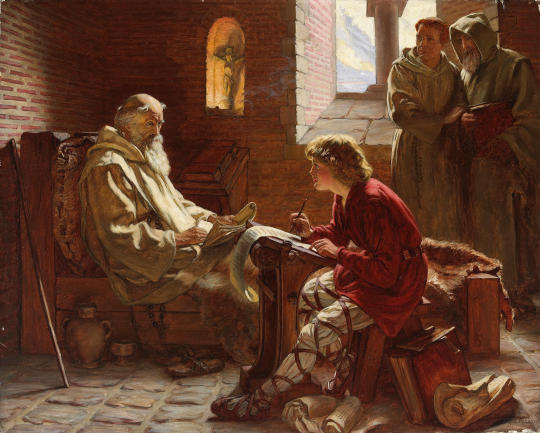#john's gospel
Explore tagged Tumblr posts
Text

John 20:1-18 (MSG)
#Scripture#Bible#faith#christianity#resurrection#Jesus#John's gospel#Mary Magdalene#I saw the Master!#Message version#words
9 notes
·
View notes
Quote
I am in favor of John and his “In the beginning was the Word,” but it is an enigmatic beginning. It means the following: for the average Joe—for this carnal being, this repugnant personage—the drama begins only when the Word is involved, when it is incarnated, as the true religion says. It is when the Word is incarnated that things really start going badly. Man is no longer at all happy, he no longer resembles at all a little dog who wags his tail or a nice monkey who masturbates. He no longer resembles anything. He is ravaged by the Word.
From The Triumph of Religion by Jacques Lacan (quoted in ‘Jacques Lacan's Benedict Option’ by Chase Padusniak)
#lacan#psychoanalysis#god#big Other#god is unconscious#atheism#the lack#lack#the word#la langue#la parole#la mot#John#John's gospel#Christianity#Catholicism#faith#religion#god is dead#father#the Law
14 notes
·
View notes
Text



A short comic based on a passage in Acts of John, an apocryphal christian writing from the second century CE. I really enjoy the way it's written as a first person account of the travels of Saint John, it's very lovely:
113 O thou who hast kept me until this hour for thyself and untouched by union with a woman: who when in my youth I desired to marry didst appear unto me and say to me: John I have need of thee: who didst prepare for me also a sickness of the body: who when for the third time I would marry didst forthwith prevent me, and then at the third hour of the day saidst unto me on the sea: John, if thou hadst not been mine, I would have suffered thee to marry: who for two years didst blind me, and grant me to mourn and entreat thee: who in the third year didst open the eyes of my mind and also grant me my visible eyes: who when I saw clearly didst ordain that it should be grievous to me to look upon a woman[...] who didst make my love of thee spotless: who didst make my joining unto thee perfect and unbroken: who didst give me undoubting faith in thee, who didst order and make clear my inclination toward thee[...]
#religious art#digital art#my art#jesus#john#apocryphal#gnostic gospels#jesus christ#bible#the bible#bible fanart#biblical art#gnosticism#short comic
2K notes
·
View notes
Text

not to carry on with my "lucy and edmund step into susan and peter's roles during the events of votdt" but in "prince caspian" we saw the pevensie siblings consistently falling into their throne order whenever they were near each other, always standing in that specific order whether on purpose or subconciously. throughout "voyage of the dawn treader", lucy and edmund continue that, only this time, thye fall into susan and peter's positions in the throne order, with lucy almost always standing on edmund's right side just as susan stood on peter's right.
but i think another detail, specifically in this shot from the end of the movie, is caspian standing in lucy's original spot, and eustace standing in edmund's original spot. caspian, who came into narnia as a stranger, and stepped into the role of king with ease, and who loves narnia and the narnians more than anything, and who vows to be a better king for his people. eustace, who was on edge, angry, and doubtful of everything around him for the first half of the movie, whose experiences changed him into a better person with the capability of connecting with his cousins.
#ALSO not to go back to my narnia characters + which apostles they are#but caspian and lucy representing matthew and john respectively#aka the two gospel writers#caspian and lucy who are the most devoted to narnia and the preservation of the country and the people#also whoever said eustace was saul/paul in that post you're SO right#hearth overanalyzes#chronicles of narnia#the voyage of the dawn treader#lucy pevensie#edmund pevensie#prince caspian#eustace scrubb
214 notes
·
View notes
Text

#bible verse#John#God#Jesus Christ#Holy Spirit#holy bible#bible#bible study#bible reading#bible quotes#scripture#christian quotes#bible quote#christian blog#christian faith#faith#christian#christians#faith in God#faith in Jesus#Jesus#Christ#bible scripture#bible verse of the day#christianity#christian living#gospel#new testament#nkjv#word of God
422 notes
·
View notes
Text

Evelyn De Morgan (1855-1919), 'The Light Shineth in Darkness and the Darkness Comprehendeth It Not, no date "De Morgan derived her inspiration for this drawing from the Gospel of St John, Chapter 1 Verse 5. This follows the story of creation and the emergence of God from nothingness, reflecting on the triumph of light against darkness. Christian doctrine is clearly present in many of De Morgan's works, and several of her paintings employ biblical titles and themes. From around 1910 her paintings show a shift into the use of more ambiguous spiritual imagery. De Morgan's mother-in-law, Sophia De Morgan, was a Spiritualist who had a profound influence on the artist's personal beliefs and style; particularly in her later career.
This drawing shows a heavenly figure of light exquisitely rendered in a blaze of gold. She is holding a lamp in her left hand, whilst showing the sign of benediction in her right. Rays of light radiate out to fill the whole composition, brightening the dark landscape and illuminating snakes and reptiles who lurk below in the gloom. This work relates to De Morgan's 1895 oil painting Lux in Tenebris…whose title also derives from the Gospel of St John. In Lux in Tenebris, the heavenly central figure is dressed elaborately in gold and holds a laurel branch, whilst two crocodiles circle below. In 1906 De Morgan also painted another oil titled The light shineth in the darkness…featuring a similar composition, but instead of reptiles at the angel's feet there lie three naked figures, shackled to rocks and blinded by despair. Though De Morgan exhibited and was known as an oil painter, she used gold drawing on dark paper throughout her career. There are fourteen known works in this medium. The contrast between the black paper and gold paint makes these jewel-like pictures singular within her oeuvre." Source
#evelyn de morgan#english artists#english painters#pre raphaelites#Gospel of St. John#gold compositions#vintage art#vintage illustration
228 notes
·
View notes
Text

Christ and St Mary Magdalen at the Tomb
Artist: Rembrandt van Rijn (Dutch, 1606-1669)
Date: 1638
Medium: Oil on Panel
Collection: Royal Collection Trust, United Kingdom
Description
Christ and St Mary Magdalene at the Tomb reveals how imaginatively Rembrandt could interpret traditional religious subject-matter. The scriptural source for this scene is the Gospel of St John (20:11-18), who describes in some detail the burial and subsequent resurrection of Christ following the Crucifixion. Mary Magdalene returns to the tomb early the next morning, only to find the stone at the entrance removed and two angels inside it where the body should have been. She then fetches two of the disciples, who check that the tomb is empty and then leave her. The angels then ask Mary Magdalene, ‘Woman, why weepest thou?’ and she replies, ‘Because they have taken away my Lord, and I know not where they have laid him.’ At that moment she turns round and sees a man dressed as a gardener, not appreciating that he is the resurrected Christ. She appeals to him for information, but he calls her by her name and she instantly recognises him. (‘Jesus saith unto her, Mary. She turned herself, and saith unto him, Rabboni; which is to say master.’) Rembrandt has depicted the moment of realisation just before the actual recognition. Most artists chose to paint the next moment in the text, when Mary Magdalene reaches out towards Jesus and he forestalls her with the words ‘Touch me not’ (in Latin, Noli me tangere).
Rembrandt skilfully evokes the dawn as the opalescent light picks out from the darkness the towers of the Temple of Jerusalem, the upper half of the figure of Christ, the face of Mary Magdalene, and the outline of one of the angels in the tomb. This use of light is almost symbolic in both the physical and the spiritual senses. The paint is in general thinly applied and, apart from the treatment of the light and the vegetation around the tomb referring to Christ’s activities as a gardener, could almost be described as monochrome. It is only after a time that the eye focuses on the two female figures (the Gospels of St Mark and St Luke refer to three Maries at the tomb) in the middle distance on the left descending the hill.
Of particular note is the positioning of Christ, who in the relationship established between his partially silhouetted vertical form and the Temple of Jerusalem behind and the rocky cave next to him dominates the composition, whereas the twisting pose of Mary Magdalene is the pivot. The tension created between Christ’s standing figure and the twisting kneeling Mary Magdalene is palpable. The artist’s only other treatment of the subject of Christ and Mary Magdalene is in Brunswick (Herzog Anton Ulrich Museum): it is dated 1651 and is totally different in composition.
#oil on panel#rembrant van rijn#christ#mary magdalene#angels#tomb#christianity#holy bible#gospel of john#bible scene#biblical#dutch painter#landscape#temple#jerusalem#architecture#foliage#17th century painting#european art
59 notes
·
View notes
Text

The Last Chapter by James Doyle Penrose
#bede#art#james doyle penrose#saint bede#the venerable bede#venerable bede#bede the venerable#deathbed#gospel of st john#medieval#middle ages#england#english#anglo saxon#anglo saxons#christianity#christian#monk#monks#religion#religious art#bible#writing#translator#translation#translating#history#europe#mediaeval#great britain
143 notes
·
View notes
Text
"The Hellenistic influence on John" this and "the Hellenistic influence on John" that. What about the Jewish influence on the Gospel of John??? What about the fact that John 1 describes Jesus with references to Lady Wisdom? What about the same chapter describing Jesus as both the Tabernacle and the Light that fills it? What about Jesus as a "Greater than Moses" who turns water into wine instead of blood? What about Jesus entering into the temple on Hanukkah and declaring himself to be the light of the world, as well as claiming to be God made maniphest? What about the constant harkening back to Jesus being Yahweh, the God of the Jews?
We cannot erase/be ignorant of the Jewish influence of the Scriptures and then be shocked when people complain of antisemitism
#the gospel of john#john the beloved#john the apostle#john the theologian#john the evangelist#john son of thunder#in the beginning#lady wisdom#jesus christ#something to meditate on#keep the faith#faith#christian#bible#christianity#jesus#faith in jesus#bible scripture#theology#scripture#the bible#religion#christian mysticism#mysticism#spirituality#progressive christian#progressive christianity#antisemitism
57 notes
·
View notes
Photo

04/09/2023
Peter has a breakdown.
___
JOKE-OGRAPHY: In John's Gospel, John refers to himself as "the disciple whom Jesus loved", which makes it sound like Jesus didn't love the others. I doubt that implication is intended, but I can't help characterizing him as a bit full of himself because of it. In the story this is based on, John talks about him and Peter running to Jesus's tomb. He makes sure to mention he got there before Peter, but that he let Peter go in first, so he's more athletic than (but still very courteous to) his crusty elders. The story sounds like John is bragging or subtly insulting Peter for being slow, so in this cartoon, I've dialed those implications up to 11. Perhaps this is an earlier draft of John's Gospel... before Peter gave him an editorial review.
#st peter#st john#peter#john#gospel#mary magdalene#easter#bible#catholic#christian#catholic humor#christian humor#catholic art#christian art#HE IS RISEN
853 notes
·
View notes
Text
today’s verse ✨
“We love him, because he first loved us.”
1 John 4:19 KJV
#christian blog#bible#christianity#scripture#bibleverse#bible verse#gospel#king james bible#king james version#kjv#share the gospel#holy bible#daily verse#verse#bible verse of the day#verseoftheday#verse of the day#scripture of the day#scriptureoftheday#word of the Lord#word of God#word of the day#word of Christ#book of 1 john#love#Jesus loves you#God loves you#new testament#christian#bible scripture
68 notes
·
View notes
Text
When it was evening on that day, the students were gathered together, but fearing their fellow Jews, they locked all the doors to the house. Jesus entered, stood among them, and said, "Peace to you". Then he showed them his hands and his side. The disciples rejoiced when they saw the Master with their own eyes. Jesus repeated to them, "Peace to you", adding "Just as the Father sent me, so I send you". Then he breathed into them, saying, "Receive the Holy Spirit. If you forgive the sins of anyone, they are forgiven; if you keep them, they're kept".
John 20:19-23
8 notes
·
View notes
Text
“If anyone says, ‘I love God,’ and yet hates his brother or sister, he is a liar. For the person who does not love his brother or sister whom he has seen cannot love God whom he has not seen.”
1 John 4:20
#christian#christianity#bible#christian faith#jesus christ#jesusisyahweh#scripture#god#yahweh#New Testament#1 John#gospel
23 notes
·
View notes
Text
John 14:21

John 14:21 NLT
[21] Those who accept my commandments and obey them are the ones who love me. And because they love me, my Father will love them. And I will love them and reveal myself to each of them.”
https://bible.com/bible/116/jhn.14.21.NLT
#christian#faith#bibleverses#verse image#visual verse#verse of the day#bible verse#bible#bible quotes#christianity#gospel of john#John 14:21
64 notes
·
View notes
Text

#bible verse#John#God#Jesus Christ#Holy Spirit#gospel#new testament#holy bible#Jesus#Christ#Christianity#christian#christians#christian quotes#christian faith#faith#faith in God#faith in Jesus#bible#bible study#bible reading#christian encouragement#christian motivation#christian blog#bible scripture#scripture#bible quotes#bible quote#bible verse of the day#verse of the day
371 notes
·
View notes
Text
I regret to inform you all that I have posted a fic
... y'all have @merlins-art's cat!john art to thank for this
#non tma fic on the tma blog???#shocking#revolting! even#anyway#malevolent#john malevolent#john doe#arthur lester#malevolent fanfic#jarthur#helixs gospel teachings#helix speaks#shameless self promo
21 notes
·
View notes